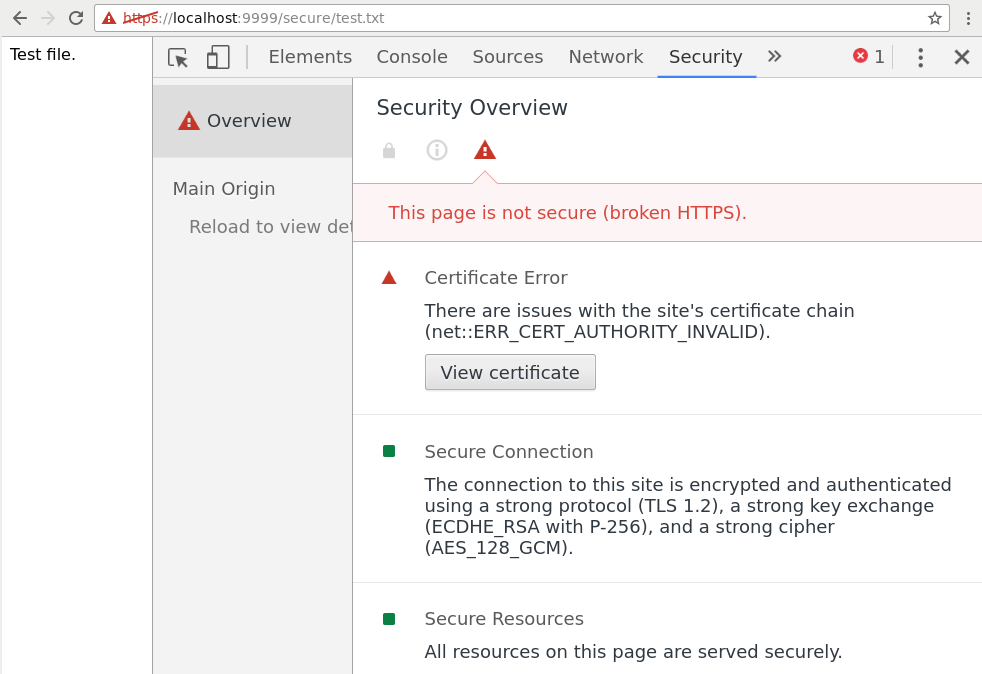Openssl Generate Strong Keys Using Eecdh

Mar 30, 2015 This will fire up OpenSSL, instruct it to generate a certificate signing request, and let it know to use a key we are going to specify – the one we just created, in fact. Note that a certificate signing request always has a file name ending in.csr. In short, use the OpenSSL command line tool to generate: The EC Name Curve parameter file; The EC Key Pair (which uses the EC named curve parameter file as input) Extract the Public key from the Key Pair. This is the key you need to share with the other side. Derive the Shared Secret with the Peer's public key and the Key Pair you generated. Cryptography/Generate a keypair using OpenSSL. From Wikibooks, open books for an open world. And primes used to create keys (prime1, also called p, and prime2.
Download and install the OpenSSL runtimes. Ssh key generation in git bash. If you are running Windows, grab the Cygwin package.
OpenSSL can generate several kinds of public/private keypairs.RSA is the most common kind of keypair generation.[1]
Other popular ways of generating RSA public key / private key pairs include PuTTYgen and ssh-keygen.[2][3]

Generate an RSA keypair with a 2048 bit private key[edit]
Execute command: 'openssl genpkey -algorithm RSA -out private_key.pem -pkeyopt rsa_keygen_bits:2048'[4] (previously “openssl genrsa -out private_key.pem 2048”)
e.g.
Make sure to prevent other users from reading your key by executing chmod go-r private_key.pem afterward.
Extracting the public key from an RSA keypair[edit]
Execute command: 'openssl rsa -pubout -in private_key.pem -out public_key.pem'
Rsa public key generator with n and eggs. RSA(Rivest-Shamir-Adleman) is an Asymmetric encryption technique that uses two different keys as public and private keys to perform the encryption and decryption. With RSA, you can encrypt sensitive information with a public key and a matching private key is used to decrypt the encrypted message. RSA Encryptor/Decryptor/Key Generator/Cracker. Fill in the public exponent and modulus (e and n) and your plaintext message. Click Encrypt. Your key must be a single number in hexadecimal, but your plaintext can be ASCII text or a series of bytes in hexadecimal. If you don't know what this means, keep the'Character String' radio button. The RSA public key is used to encrypt the plaintext into a ciphertext and consists of the modulus n and the public exponent e. Anyone is allowed to see the RSA public key. To decrypt the ciphertext, this tool creates two private keys which can be used independently: Private key A The RSA private key consists of the modulus n and the private.
e.g.
A new file is created, public_key.pem, with the public key.
It is relatively easy to do some cryptographic calculations to calculate the public key from the prime1 and prime2 values in the public key file.However, OpenSSL has already pre-calculated the public key and stored it in the private key file.So this command doesn't actually do any cryptographic calculation -- it merely copies the public key bytes out of the file and writes the Base64 PEM encoded version of those bytes into the output public key file.[5]
Viewing the key elements[edit]
Execute command: 'openssl rsa -text -in private_key.pem'
All parts of private_key.pem are printed to the screen. This includes the modulus (also referred to as public key and n), public exponent (also referred to as e and exponent; default value is 0x010001), private exponent, and primes used to create keys (prime1, also called p, and prime2, also called q), a few other variables used to perform RSA operations faster, and the Base64 PEM encoded version of all that data.[6](The Base64 PEM encoded version of all that data is identical to the private_key.pem file).
Password-less login[edit]
Often a person will set up an automated backup process that periodically backs up all the content on one 'working' computer onto some other 'backup' computer.
Ecdh Key Exchange
Because that person wants this process to run every night, even if no human is anywhere near either one of these computers, using a 'password-protected' private key won't work -- that person wants the backup to proceed right away, not wait until some human walks by and types in the password to unlock the private key.Many of these people generate 'a private key with no password'.[7]Some of these people, instead, generate a private key with a password,and then somehow type in that password to 'unlock' the private key every time the server reboots so that automated toolscan make use of the password-protected keys.[8][3]
Further reading[edit]
- ↑Key Generation
- ↑Michael Stahnke.'Pro OpenSSH'.p. 247.
- ↑ ab'SourceForge.net Documentation: SSH Key Overview'
- ↑'genpkey(1) - Linux man page'
- ↑'Public – Private key encryption using OpenSSL'
- ↑'OpenSSL 1024 bit RSA Private Key Breakdown'
- ↑'DreamHost: Personal Backup'.
- ↑Troy Johnson.'Using Rsync and SSH: Keys, Validating, and Automation'.
Openssl Generate Strong Keys Using Ecdh Key
- Internet_Technologies/SSH describes how to use 'ssh-keygen' and 'ssh-copy-id' on your local machine so you can quickly and securely ssh from your local machine to a remote host.